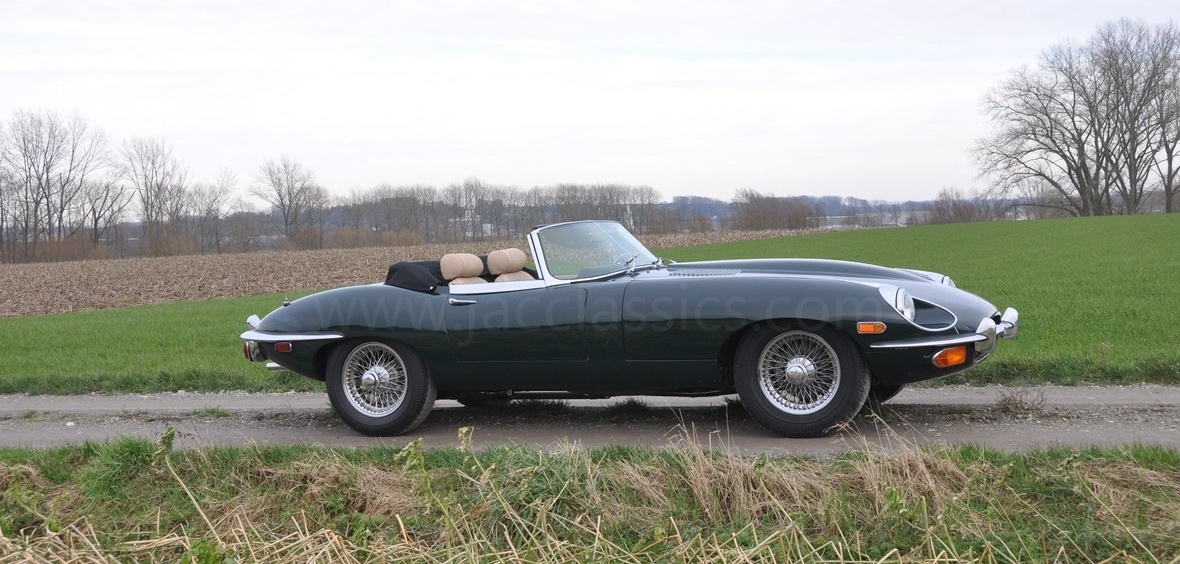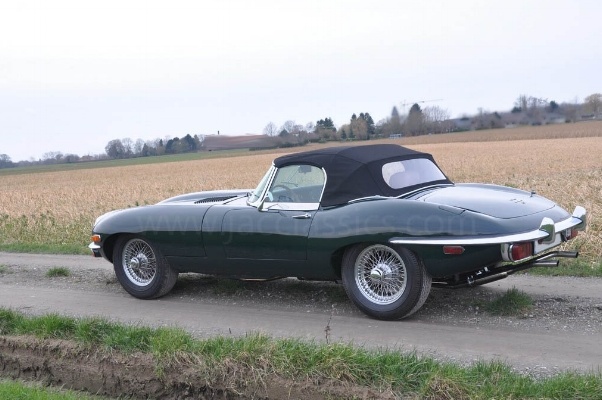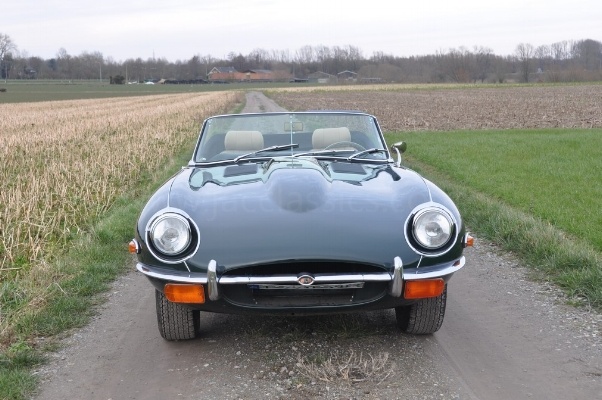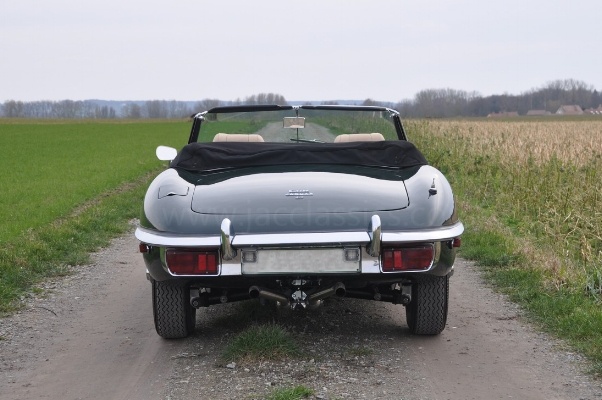1968 JAGUAR E-TYPE
The body styling was sensuous, beautiful, and the car set new standards in all areas. Enzo Ferrari described the Jaguar as the most beautiful car in the world, and few many regard the original Coupé and Roadster models as perfect from every angle. A brand new independent rear suspension was designed by Bob Knight.
The car had the triple carburetor 3.8 litre XK engine first seen in the XK150 ‘S’. Producing 265 bhp (198kW) in a lighter aerodynamic body gave virtual 150 mph (241km/u) performance, with acceleration of 0-60 mph in 6.9 seconds.
To improve interior comfort, Jaguar recessed the floor below and behind the seats in June 1962, leading to the “flat floor” moniker of the earliest E-types. More small-but-notable changes arrived in 1963, with a vinyl center console with armrest replacing the alloy-paneled one, shielded rear door hinges on FHCs to minimize hinge-damaged luggage, and revised axle gearing.
In 1967, Jaguar launched an updated model which came to be known as the Series 1 ½, which was only in production for a single year from 1967 to 1968. Cosmetic changes included the loss of the original Le Mans-style glass-covered headlamps to more upright and exposed headlamps. Under the hood, a pair of emission-calibrated Zenith-Stromberg carburetors replaced the three S.U. carbs. Power was reduced from 265-hp to 246-hp. The smooth polished cam covers were painted black and ribbed.
From the front, Series-2 E-types (1968-1971) are recognized by a larger grille opening and re-positioned front signal-lamps. Brakes were upgraded, and radial tires soon became standard equipment. Interior changes included dash-mounted toggle switches replaced with “safer” rockers.
The transformation was completed with the V12-powered Serie-3 model in 1971. It had a wider track and less gainly front-end styling, but under the bonnet sat 5.3-litres of sweetly smooth engine. The E-Type was produced till 1975.






